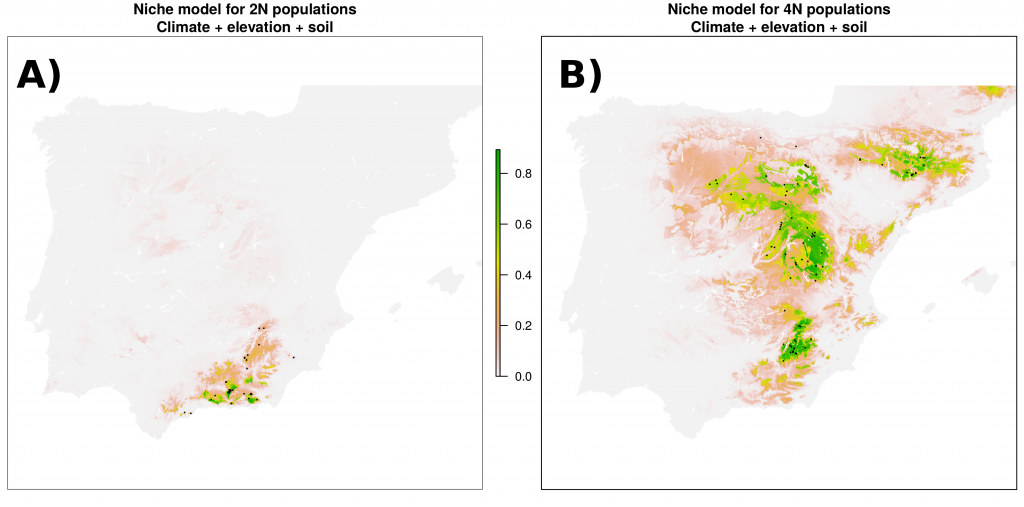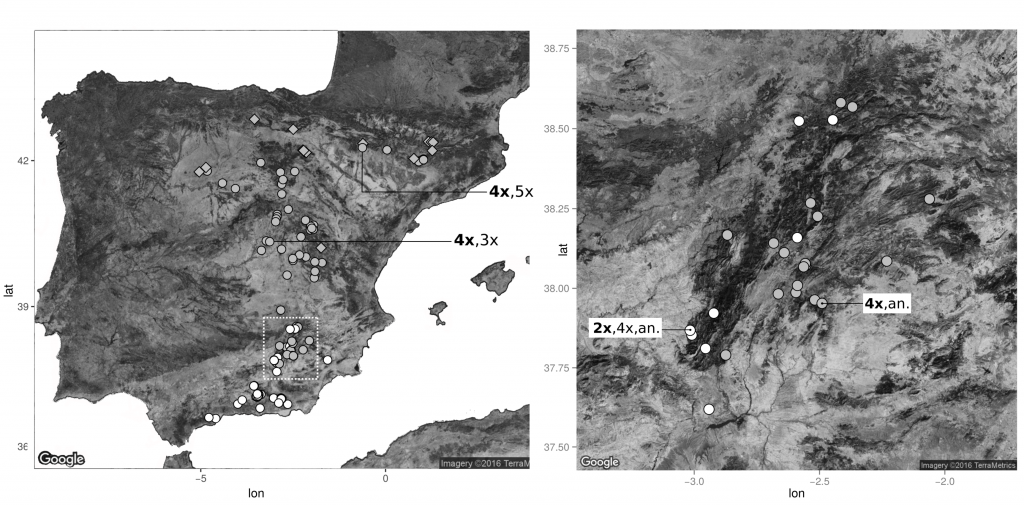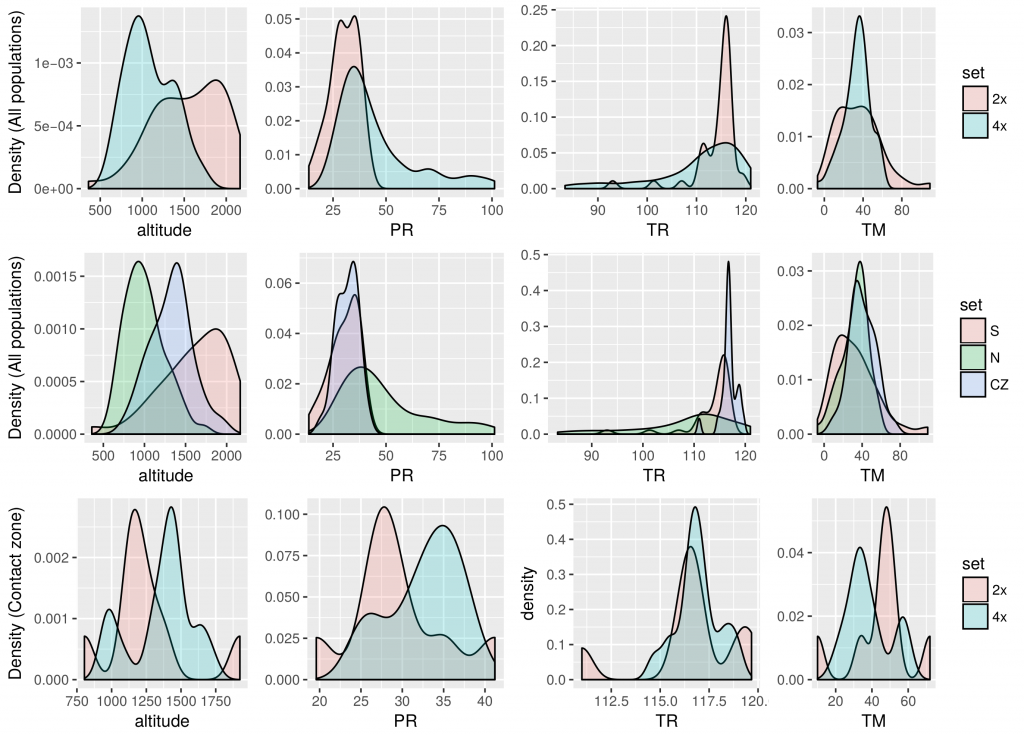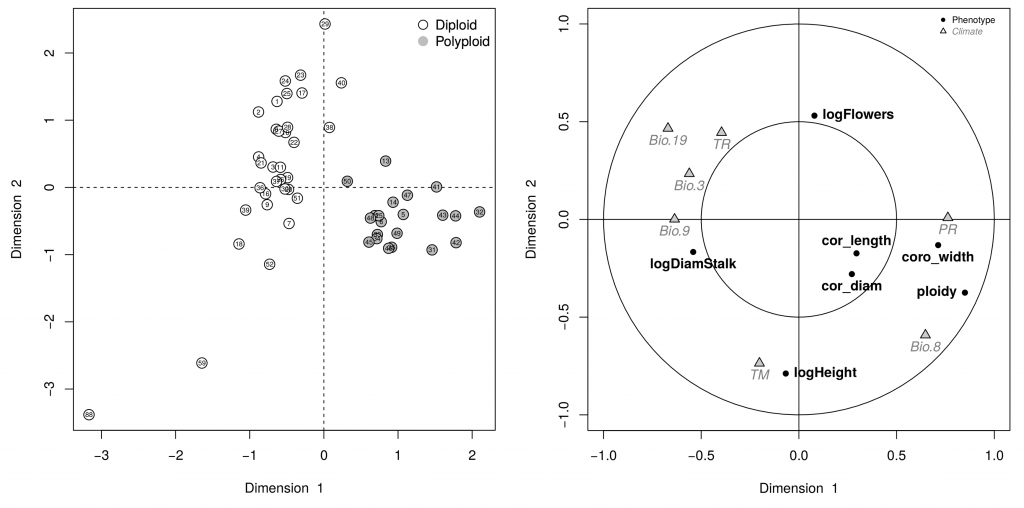In a paper recently published in Plant Biology, we have identified environmental differences between niches occupied by diploids and tetraploids Erysimum mediohispanicum.

To evaluate the adaptive significance of the geographic distribution of cytotypes, we characterized the ploidy level of 118 populations across the Iberian Peninsula and obtained their interpolated climate variables from the Worldclim 1.4. In addition, we also characterized floral phenotype of both cytotypes.

We found a clear geographic pattern in the distribution of cytotypes, with diploid individuals occurring in the southernmost part of the distribution range, while tetraploids were found in the northern area. A contact zone between both cytotypes was identified but diploid and tetraploid individuals very rarely occur in sympatry. In this contact zone, both cytotypes grow at different altitudes, mean temperatures and precipitation.

Diploid and tetraploid populations clearly differ in corolla tube width and stalk diameter, and importantly depends on precipitation and temperature. In addition to climate, several soil variables also explained the geographic distribution of cytotypes, according to our niche models. The most consistent influence was found by the dominant parent material, with tetraploid populations growing in more diverse soil types.

